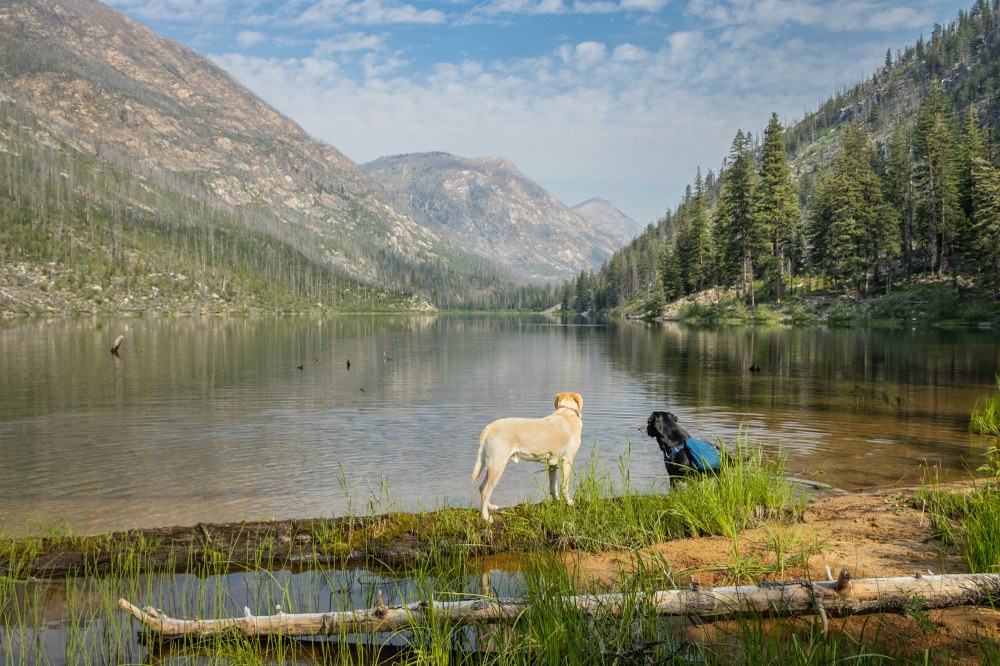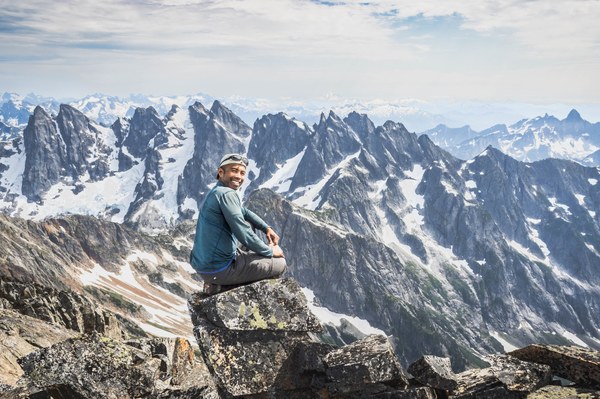
I took two years away from social media for a much-needed cleanse several years ago. Before going off the grid, I posted three times a day, intending to gain traction for my hiking blog. But as much as I enjoyed beautiful landscape photos, I found I needed a break from seeing evasive posts from the self-proclaimed "influencers" or "inspirers" with a large following on Instagram and Facebook.
Instead of tagging their location in the photo (or geotagging), they would often input phrases like "Keeping Washington beautiful," "Opt outside responsibly," or "Somewhere in Washington State." The argument is that by refraining from geotagging an image, we decrease the likelihood that the particular location will become heavily visited and thus damaged.
I have found this practice to be disingenuous and a form of gatekeeping. It would be phony of me to encourage others to explore the outdoors and then turn around and withhold information as I post. If we cared about the environment 100%, we wouldn't have visited those places in the first place. Boasting epic trip photos to collect more followers and likes does nothing to forward environmental preservation or protection. We are anything but inspiring when we behave this way. Social media users intend to keep others from photographing that same epic spot, and what they're saying (or implying) is, "feel free to explore, but don't visit the places where I and only a select few have."
Environmental impact
Geotagging or sharing information doesn't suggest that we care less about the environment. Not unless we're unwilling to give people the benefit of the doubt and assume they won't uphold LNT principles when they go to these beautiful places.
In my experience, people who are willing to go off the beaten path to those hard-to-reach places are responsible individuals who care about the environment. Instead of allowing people to risk their lives without sufficient information, we should instead provide them with the data needed and educate them when they reach out. As a community, we should be about sharing the earth's beauty, not keeping it to ourselves. Let's give others the same experiences we've had the privilege to enjoy.
Offering the benefit of the doubt
Nowadays, a quick online search can yield plenty of information, including route descriptions. I usually find what I need online or through personal connections. Going to remote places in the Cascades, I've also relied on those brave souls who were generous enough to share their experiences in detail. If it weren't for their first-hand knowledge, most of us likely wouldn't have succeeded on our own. Because my research experiences have mainly been positive, I've learned to pay it forward through GPS tracks, post content, or hashtags on my social media posts long ago.
Knowledge-sharing can be powerful and help build community. People don't need to come to us for help with the plethora of available information on the internet. But individuals choose to reach out to us because they value our experiences and expertise. Or better yet, they see us as potential allies in the outdoors, or as people with whom they can have meaningful connections.
 John on Mt. Fury. Photo by John Porter.
John on Mt. Fury. Photo by John Porter.
My philosophy is to present the information and let people make their own informed decisions. While gatekeepers do bring up legitimate concerns, one example being people's ability to climb, there's no way of evaluating someone's skills based solely on social media interactions. Sure, some folks may not adequately prepare, but most gauge their ability before trying things outside of their current level of experience. Others might not even make it to those places on the first try and may return multiple times if they've set their hearts on going there. Again, give people the benefit of the doubt, educate them, and let them be the judge.
Many people seem to confuse “bragging rights” with the right to know about a place. I would argue that only the first ascensionists can claim bragging rights and that bragging rights and the right to know about a place are two separate things.
Unless we've made the first ascent or laid the first route, our rights are only limited to standing atop the summit. Everything else in between is the result of the efforts of those who have come before us, and from whom we've benefited. That doesn't give us the right to keep others out or to claim these beautiful places as our own. We can choose not to publicize the information, but we can't tell others that they should also refrain from doing so.
The outdoor ego
When we hold the information and share as much (or as little) as we wish, I would argue that we should drop the high-and-mighty act. Gatekeepers feel they have the upper hand because they now hold some larger-than-life knowledge of a secret place. Yet they've forgotten that they once needed the information, which other people's sweat and effort had given them. With that said, are we indeed thinking about protecting the environment by keeping the so-called hideaway a secret? Or is it more about our ego wanting to take complete control by locking up the details?
The Washington volcanoes are a prime example. Climbing them is no longer unique as many have conquered those places. We don't hear gatekeepers gripe about more and more people "finding out." Why not? Perhaps the fact that they are all recognizable and gatekeepers are powerless to keep them a secret, plus the route descriptions of those areas are a dime a dozen. But the volcanoes are pristine and still need our protection, so why not try to "keep out" those aspiring to climb them?
We know that an area's accessibility largely dictates the number of visitors. Locations that are overcrowded will continue to be so because those areas are attainable. But places that are out of reach for most, or require long treks, are not likely to be overrun by day hikers.
Space for all
I've seen enough photos of the Cascades to know that the truly hidden places in the range require a ridiculous amount of brush-fighting and route-finding. It raises my eyebrow when gatekeepers claim to have found a spot by luck or by dropping a pin on a map, and that others should also put in the work to make their way there. The Picket Range, for example, is a remote and rugged area. But people who have been there would know that there's no longer a stone left unturned. Even with the highly-publicized West McMillan Spire, Luna Peak, and Mount Challenger, the area is still relatively pristine. I first went into the Picket Range in 2014, and to this day, I have yet to see a Rattlesnake Ledge-sized crowd making their way there.
If we are so quick to share our pictures on social media, what's keeping us from sharing the locations? Are we genuinely keeping the outdoors beautiful, or are we only keeping people out and trying to have it all ourselves? Let's continue to foster a healthy and supportive community for everyone around us. Let's bask all we want in our epics and ethics, but let's not keep others from experiencing the same joy. Let us be better.
This article originally appeared in our Summer 2022 issue of Mountaineer magazine. To view the original article in magazine form and read more stories from our publication, visit our magazine archive.
 John Porter
John Porter